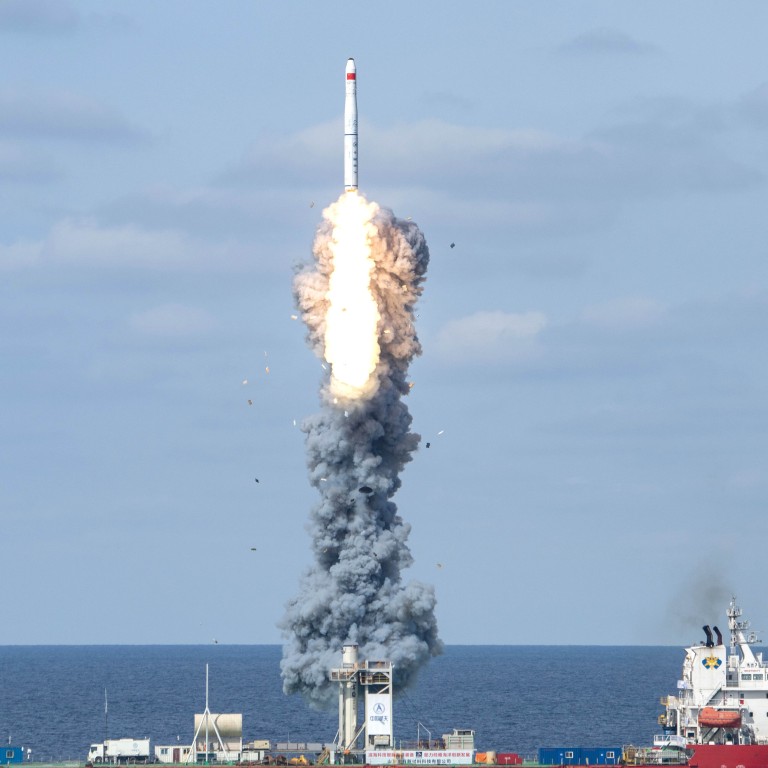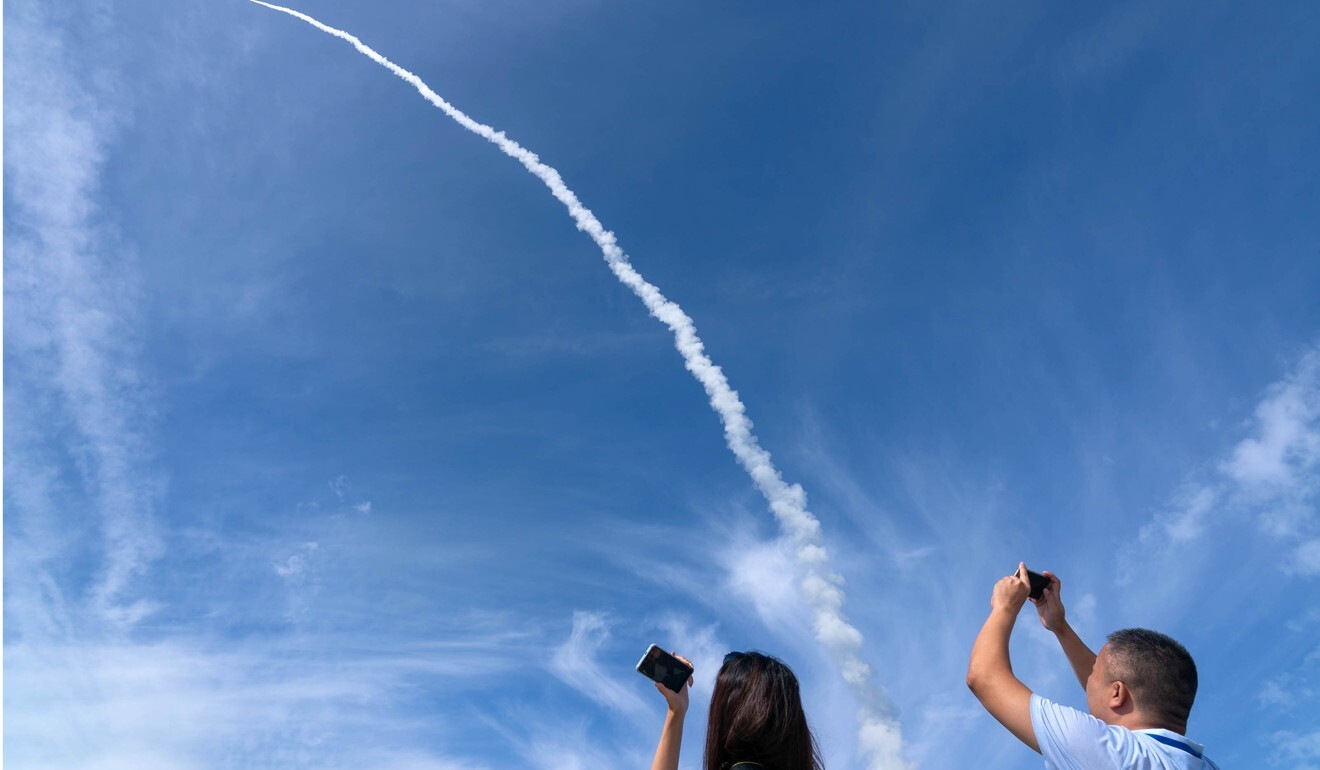
Seaborne rocket launches key to future of China’s space programme, experts say
- ‘Building more floating space launch centres like the Americans will become a trend,’ military expert Zhou Chenming says
- China on Tuesday sent nine satellites into orbit using a Long March rocket fired from a platform in the Yellow Sea
Chinese state newspaper Global Times reported that a Long March-11 rocket carrying new satellites for the Jilin-1 remote sensing constellation lifted off from a floating platform in the Yellow Sea on Tuesday morning.
Observers said the development of a seaborne version of the Long March rocket was in line with industry trends, as borne out by SpaceX’s chief executive Elon Musk, who said in June the company planned to build more ports to accommodate them.
Beijing-based military expert Zhou Chenming said that while seaborne launch technology was still quite new for China it could help it keep up with companies like SpaceX. One of the benefits was that such launches were cheaper, as it was easier to calculate where rocket boosters would come down so they could be reclaimed.
“Building more floating space launch centres like the Americans will become a trend in China,” he said. “And seaborne rockets will also become a trend in the space industry of the future because of their lower cost and lower risk.”

While China needed to build more space launch centres to meet its space programme ambitions, it was not always easy in such a densely populated country, Zhou said.
“Space launches need to deal with the risk of falling debris, and floating spaceports like those used by SpaceX are the best option.”
The country has four space launch centres, one of which is on Hainan island and the others in remote areas of Gansu, Sichuan and Shanxi provinces.
At a press conference on Wednesday, Ma Xiaoguang, spokesman for Beijing’s Taiwan Affairs Office, said the military exercises conducted by the PLA Air Force in skies to the southwest of Taiwan were intended as a warning to forces pushing for independence for the island.
“The drills are a necessary response to the security situation across the Taiwan Strait,” he said, adding that the island’s ruling Democratic Progressive Party and other groups were “troublemakers” who sought to damage cross-strait relations.

